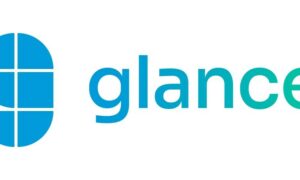Effective Use of Customer Stories: 18 Sales-Boosting Strategies Revealed
Customer stories are powerful tools that can significantly boost sales when used effectively. This article reveals proven strategies for leveraging customer testimonials, case studies, and success stories to drive business growth. Drawing from expert insights, we explore practical approaches to integrate these narratives into your sales initiatives, from outbound strategies to personalized team pages.
- Embed Case Studies in Outbound Strategy
- Integrate Success Stories into Sales Initiatives
- Share Real Stories of Small Business Growth
- Craft Testimonials Using Hero’s Journey Framework
- Transform Customer Reactions into Media Coverage
- Leverage Customer Advocacy for Organic Growth
- Build Trust with Community-Driven Testimonials
- Structure Case Studies for SEO and Conversion
- Guide Testimonials with Optimized Survey Questions
- Focus on Tangible Results and Transparency
- Strategically Place Video Testimonials for Impact
- Align Patient Reviews with Decision-Making Journey
- Use Testimonials to Simplify Franchise Decisions
- Create Relatable Paths to Client Success Stories
- Embed Testimonials Throughout Customer Journey
- Showcase Time-Saving Workflow Improvements
- Personalize Team Pages with Client Experiences
- Demonstrate Specific Challenge Solutions
Embed Case Studies in Outbound Strategy
We don’t just share case studies; we embed them directly into our outbound strategy.
Most companies hide testimonials on a webpage and hope prospects eventually find them. We make ours part of the sales conversation, right where they actually drive action.
Here’s how we do it. We tailor every outbound campaign with real examples that speak to the prospect’s world, focusing on the specific industry and challenges. If we’re reaching out to a software firm expanding into the U.S., we’ll show how we helped a similar team grow pipeline, improve conversions, and shift their focus back to closing deals. No vague claims, just proof that hits home.
Our SDRs don’t pitch; they show exactly who we’ve helped, how fast, and what changed. That approach creates credibility and drives engagement.
Bring your success stories to the forefront instead of holding them back until the last step. Use them to start the conversation. Relevance and results still outperform clever copy.
If your case studies aren’t helping your team book meetings, they’re either the wrong stories or showing up too late. Used right, proof accelerates pipeline.
Vito Vishnepolsky, Founder and Director, Martal Group
Integrate Success Stories into Sales Initiatives
We’ve strategically integrated customer success stories into our outbound sales and marketing initiatives. One standout example is the case study on ClassPass, a high-growth wellness platform.
We created a detailed case study outlining how Vention helped ClassPass rapidly scale its development team to meet global user demand. This case study highlighted:
- The client’s initial challenges (need for fast scalability and consistent code quality across time zones)
- The tailored solution we provided (a dedicated team of full-stack developers integrated into their workflow)
- Quantifiable outcomes (reduced time to market, increased feature velocity, and seamless team integration)
This story was featured:
- On our website under the success stories section
- In email sequences targeting companies in the wellness and lifestyle tech space
- As sales enablement collateral during the discovery and proposal stages
Why it was effective:
- Specificity and metrics: To build credibility, we included concrete results and metrics (e.g., team ramp-up time, feature delivery speed).
- Industry relevance: We used it to reach similar companies (growth-stage consumer tech) where the problem and solution directly resonated.
- Multi-format: We repurposed the story into visual snippets for social media and sales decks, allowing multiple points of engagement.
The case study helped generate multiple qualified leads within the wellness tech vertical. It accelerated the sales cycle by addressing buyer objections upfront (concerns about integrating with remote teams or ramp-up speed).
Yuliya Baranchuk, Editor in tech industry, Vention
Share Real Stories of Small Business Growth
One way we’ve used customer testimonials to drive sales is by sharing real stories from small business owners who found the right space to grow with us. This could be a contractor using our outdoor storage or a local service company moving into one of our flex warehouses. These stories help prospective tenants see how our properties can solve their specific challenges.
We made the testimonials compelling by keeping them focused and authentic. Instead of using generic quotes, we asked tenants to explain the problems they faced before leasing with us and how our space helped improve their operations. Including photos and real details made the stories more relatable and credible. When new prospects see real results from people like them, it builds trust and speeds up the leasing decision.
Steve Mackey, Managing Member, Mack Industrial
Craft Testimonials Using Hero’s Journey Framework
When interviewing customers, I have found it helpful to take them through what is called the “Hero’s Journey.”
Start by asking about their business before your product or service comes into play. Really lean on the pain points that cost time, money, or effort.
Then ask about the early days of getting to know and using your product/service. How easy was it to get started? How was the onboarding process? What was the setup time like?
Next comes the results. How has their life improved since then? What opportunities do they now have? What do they get to enjoy now?
Lastly, get a call-to-action directly from them. In their words, give them a prompt that, when answered, sounds like they are directly talking to the person watching the video.
This sequence gives relevance, desire, and appeal to any product or service you have to offer.
Rayne Gibson, Owner, Taproots Horticulture Consulting
Transform Customer Reactions into Media Coverage
We transformed a phone case into a headline magnet. When Carved approached us, they weren’t lacking quality or fans. What they needed was visibility at scale. Their products were already sparking reactions like, “Where did you get that?” so we focused on turning that curiosity into coverage.
We built a media campaign that tapped into real customer reactions and used them as the hook. We pitched the emotion, the uniqueness, and the story behind each handcrafted piece. We didn’t mass blast. We crafted smart, personalized pitches for each editor and paired them with physical samples to make the story tangible.
That campaign landed them in Forbes, CNET, The Verge, 9to5Mac, IGN, Android Central, Yahoo News, and a long list of other outlets. One editor even visited their HQ to watch the product come to life. Traffic jumped 23 percent. Nearly 500 editors replied. We secured 88 pieces of earned media and over 150 hot leads.
All of this was achieved by leaning into what made the product unforgettable in the first place. When your customers already love you, the media just needs to see what they’re seeing.
Bryce North, Founder, Don’t Be A Little Pitch
Leverage Customer Advocacy for Organic Growth
One of our most effective go-to-market (GTM) strategies is centered around customer advocacy. Our marketing and sales team use real stories from our users to drive growth. We’ve learned that when customers genuinely love your product, they are often more than willing to introduce you to their friends who might benefit from our product. In order to create these introductions organically, you have to execute two aspects very well: tell their stories effectively and connect your customers with the right prospects.
Customer testimonials and case studies are the backbone of this strategy. We don’t just treat them as marketing collateral; we use these tools to accelerate the sales cycle. By highlighting how we have solved specific problems for teams like theirs, we help prospects immediately increase the time to value and decrease the cost of ownership of our solution.
When a prospect is evaluating our platform, we offer them the chance to speak directly with our existing customers. We offer an opportunity to not only build trust but also give the prospect a chance to hear firsthand how our platform solves real-world challenges in sales compensation.
Most importantly, we take the time to deeply understand each prospect’s pain points. That way, we can match them with the right customer and share the most relevant piece of information that speaks to their specific needs. Our team never tries to share a generic success story. Testimonials and case studies provide a mirror of the challenges they’re facing, and a genuine proof point that we’ve helped our customers overcome the same obstacles they are currently facing.
By turning our customers into storytellers, we’re building a sales engine that’s grounded in trust, results, and real relationships.
Nick Nielson, Founding Account Executive, ZenCentiv
Build Trust with Community-Driven Testimonials
One of the most effective testimonial campaigns I’ve led was for a luxury car dealership representing a brand ranked in the latter half of the top 10 luxury manufacturers. Their vehicles rivaled, and often outperformed, better-known luxury brands. The designs were sleek, the features were extensive (who doesn’t love standard massage seats), and the price points were lower and surprisingly reasonable.
However, buying behavior in luxury automotive isn’t always rational; it’s emotional. People often chase prestige, not performance. The logo matters more than the ride.
To flip that script, we tapped into the community, not the influencer economy. We built a campaign around real, respected voices: doctors, realtors, and news personalities. These weren’t paid endorsers; they were passionate, real customers who believed this brand delivered better value, and they weren’t shy about saying it.
We filmed a video series where they each spoke candidly about their experiences with competing dealerships and why they ultimately switched. We encouraged bluntness, and the honesty made the storytelling incredibly compelling. We ran the videos across connected TV and digital platforms, pulled excerpts into radio ads, and always included their names and occupations to add credibility.
The campaign culminated in an outdoor event at a luxury hotel, where these advocates were treated like celebrities. They became the face of a smarter luxury choice, and that social proof was magnetic.
Over the six-month campaign, lead volume nearly doubled, and vehicle pre-orders surged. The lesson was that testimonials aren’t just about praise; they’re about trust. When you let real people tell your story with conviction, the market listens.
Kyle Senger, Founder & Lead Strategist, Unalike Marketing
Structure Case Studies for SEO and Conversion
We treat case studies with the same importance as SEO content — designed to rank, convert, and build trust at scale.
One strategy that has consistently worked for us is structuring every case study like a story, while grounding it in business outcomes. For example, we helped a B2B SaaS company generate 24 high-intent leads from just three bottom-funnel blog posts — without using ads or outbound marketing. This story became a cornerstone asset across our site, sales decks, and LinkedIn content.
What made it effective? We didn’t simply state “here’s what we did.” Instead, we showcased the exact pain point, explained the thought process behind the strategy, and presented measurable results. We also made it easily scannable — using pull quotes, bold statistics, and real screenshots.
Repurposing was key to our approach. We broke the story into carousel posts for LinkedIn, short founder quotes for credibility, and internal links across related blogs. That single story didn’t just build authority — it closed deals. Because in B2B SaaS, trust comes from proof, not promises.
Priti Sohal, Content Strategist, Concurate
Guide Testimonials with Optimized Survey Questions
Customer testimonials and case studies rarely come pre-packaged for effective online marketing. Left unedited, even the most glowing reviews can fall flat if they miss critical emotional elements, lack persuasive keywords, or fail to connect with the language that actually drives search and buyer interest. A sincere testimonial is valuable, but if it doesn’t align with how future customers search or what they care about, it may not convert or resonate.
To ensure that the feedback you receive is both authentic and highly usable for marketing purposes, it’s wise to take a more intentional approach. One effective strategy we use is issuing our own carefully crafted, language-optimized survey to satisfied clients, ideally before they have the chance to put their feelings into their own, and potentially less targeted, words.
People naturally tend to mirror the language and structure of the questions they’re asked. By intentionally embedding your preferred keywords, product names, or service themes into your survey questions, you can gently guide clients to incorporate those terms into their responses. For example, rather than asking, “Were you satisfied with the process?” we might ask, “How did our high-touch, personalized recruitment process meet your expectations?” That small tweak can lead customers to naturally repeat the terms that matter to your SEO or brand positioning.
Often, the difference is just a matter of semantics, like guiding someone to say “personalized recruiting” instead of “helpful service.” Both are true, but one will carry more weight in your marketing strategy and improve your search relevance later on.
This tactic can also help shape the broader narrative of the testimonial. If you want to emphasize a particular strength, like responsiveness, speed, or specialized expertise, you can subtly center those themes in the survey prompts to encourage answers that highlight them.
Importantly, this isn’t about putting words in your clients’ mouths. It’s about making it easy for them to articulate their genuine experience in a way that’s polished, aligned with your messaging, and primed for marketing use. When done thoughtfully, this approach respects the customer’s voice while ensuring the final testimonial is strategic, not just complimentary. It’s a simple but powerful way to turn real feedback into content that actually drives new business.
Jon Hill, Managing Partner, Tall Trees Talent
Focus on Tangible Results and Transparency
Impact is everything. People don’t care about fluff; they want to know what your work actually does for them. That’s why my case studies focus on results: the extra conversions, growth, or recognition clients get from the project. I back it up with testimonials where clients talk about their own experience and how my service helped them.
I also make sure to link directly to the live project so anyone can see it with their own eyes. This transparency builds trust and makes it far more likely they’ll reach out to get their own project done with me.
In short, show the impact, prove it with real voices, and let the work speak for itself. That’s how you drive sales.
Ravi Klaassens, Founder, Paramor
Strategically Place Video Testimonials for Impact
We placed customer testimonials on our About Us page so that new customers can see positive stories right away while learning what we do. It’s a great look for our business that encourages people to buy our products.
We chose to do video testimonials so our clients can speak for themselves about why they love working with us. Plus, friendly faces often help with sales!
We used text from the testimonial and the speaker’s face for each thumbnail, so busy customers can get the gist without having to watch.
Jodi Laux, Copywriter, Totally Promotional
Align Patient Reviews with Decision-Making Journey
When writing service page content for healthcare clients, especially for high-intent services like dental implants, I carefully mine real patient reviews and place them exactly where they support the reader’s decision-making journey.
For instance, while writing a dental implant service page, I came across a powerful review that said: “I was nervous about getting dental implants, but the team explained everything clearly, and the procedure was smoother than I imagined. It’s the best decision I’ve made for my health and confidence.”
Rather than saving this quote for a testimonial section at the bottom, I placed it right after the paragraph explaining the consultation and treatment process. That’s typically where hesitant patients start questioning whether implants are painful, complicated, or worth it.
By integrating the review at that point, it acts as a moment of real-world reassurance — right when the visitor is on the fence. I’ll often repeat this approach across the page, aligning quotes with sections on financing, recovery, or long-term results.
This technique works because it keeps the patient voice present throughout the journey. The testimonial becomes part of the narrative — not an afterthought. And when done right, it builds trust naturally, helping more readers move from curiosity to conversion.
Nick Cullen, Content Editor, Ryse Healthcare Marketing Agency
Use Testimonials to Simplify Franchise Decisions
We use testimonials to make the decision process easier to trust. Buying a franchise is a big move, and people want to hear from others who’ve been through it.
We focus on clear, specific stories — what someone was looking for, what helped them decide, and what outcome they got. That’s what makes it useful.
When people see real results from people like them, it builds confidence and helps them move forward.
Alex Smereczniak, Co-Founder & CEO, Franzy
Create Relatable Paths to Client Success Stories
The most effective sales stories are those in which prospects can see themselves.
If you have an outstanding client success story, utilize it extensively. Publishing it as a case study on your website is just the beginning. I create paths to that story across high-traffic pages by reframing the client’s original challenge in broader, more relatable terms.
Rather than simply showcasing results, I use hooks such as, “Have you ever faced this kind of challenge?” followed by, “Here’s how one of our clients overcame it.” This type of curiosity bridge drives qualified traffic to the case study and aligns the story with real buyer pain points.
To make this approach effective, you must have a deep understanding of what your prospects are trying to solve. If they read about experiences that resonate with their own feelings, they will trust that you understand them, and your brand will resonate with them.
Over time, these stories evolve into the foundation of your ideal customer profiles and brand personas.
James DeLapa, SEO & Web Strategy Expert, Bottom Line Insights
Embed Testimonials Throughout Customer Journey
Most businesses use customer testimonials solely at the top of the funnel, but we have found that by embedding them along the entire customer journey, we can best drive our sales. It is not unusual to see customer testimonials in advertisements or on social media profiles in either video or written form, but too often this is just a way to push people towards a website, and once that happens, they are usually nowhere to be found.
We, however, use testimonials along each part of the customer journey, from UGC that talks about our services, to those that address common pain points, to others who spoke about how they felt about their final decision to engage with our business. We go along the entire time continuum of the experience. By implementing customer testimonials beyond the sales funnel entrance, we have effectively guided our customers through their entire journey and greatly increased our conversion rates in the process.
Jason Bandarra, CEO, Sonoma Stays
Showcase Time-Saving Workflow Improvements
Using user-generated content has always been super effective in making potential users trust you and take that leap of faith. One way we use customer testimonials to drive sales is by showing how much time tasks used to take before and after using our workflows. For example, showcasing a client expressing that it took them 3 hours to prep for client reports, but after using our platform, it takes only 15 minutes to generate reports, freeing up to 10+ hours a week!
These kinds of testimonials are easier for users to understand, resonate with, and feel connected to as they have similar stories. It also shows the actual results they will achieve from using our services. By pairing these testimonials with a screen recording from the customer showing their workflow, it becomes honest, relatable, and demonstrates real results by actual users, showing tangible ROI, not just promised customer satisfaction.
Neha Rathi, Founder, Nifty
Personalize Team Pages with Client Experiences
In enhancing our website’s “Meet the Team” pages, we’ve included client testimonials right under each team member’s bio. These aren’t just generic praises; they are specific experiences shared by clients who have worked directly with that staff member. For instance, when a testimonial mentions how our lead paralegal meticulously prepared documents, it helps potential clients visualize the dedication and expertise they can expect.
This approach serves to build trust by highlighting the individual contributions that clients appreciate. It gives a sense of the personal care each team member provides, making our service feel more approachable and tailored. Testimonials that recognize staff by name help humanize our firm, reassuring potential clients they will receive attention from skilled professionals, not just from a faceless company.
Shella Makwana, Director & Principal Solicitor, Makwana Solicitors
Demonstrate Specific Challenge Solutions
One way we’ve used case studies is to demonstrate how our product can help customers overcome a specific challenge or barrier.
For instance, as a SaaS company, we’ve had potential customers express concerns about adoption rates with older demographics. We were able to show them a case study of a property manager who runs a retirement home, and explained how we helped that client with the same demographic. The case study demonstrated that it was possible to achieve a high adoption rate with senior residents despite some initial resistance to technology.
The clear social proof for that specific use case made the story compelling to that customer and helped drive sales to others like them.
Luke Marsh, CMO, Innago
Related Articles
- Multiple Stories and Consumer Engagement: How to Boost … – TechBullion
- Michael Osland shares 18 Simple Strategies for Rapidly Growing
- Enhancing Engagement: Strategies for Boosting Interaction and



































